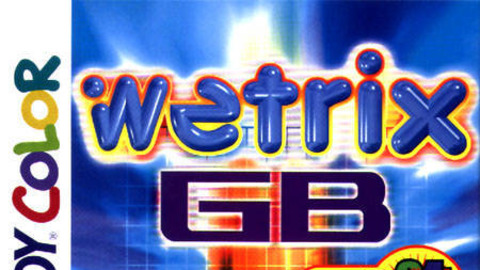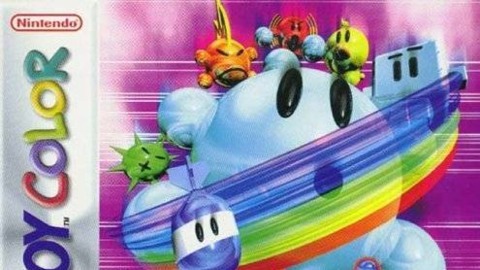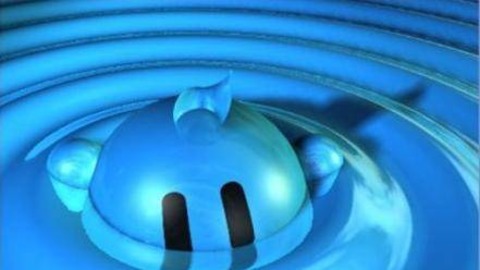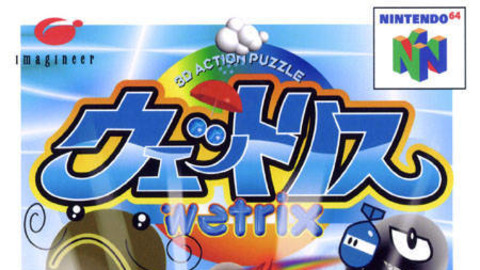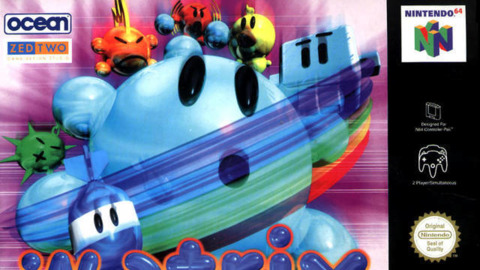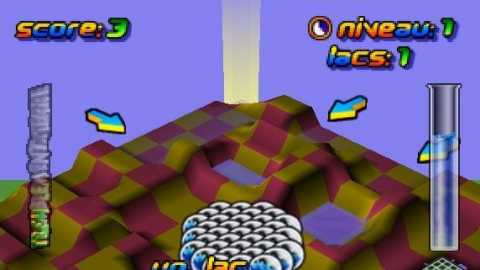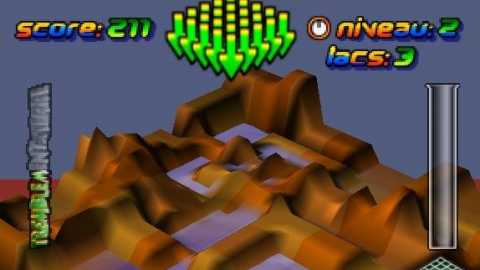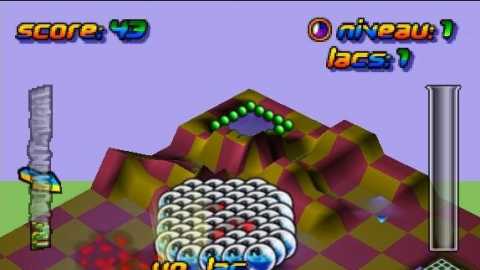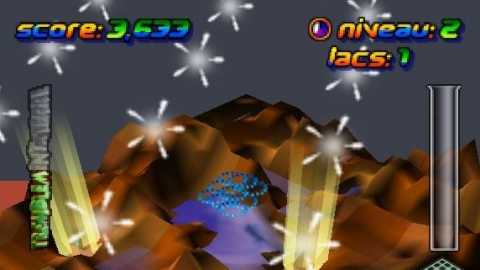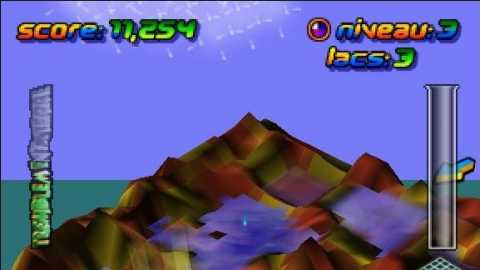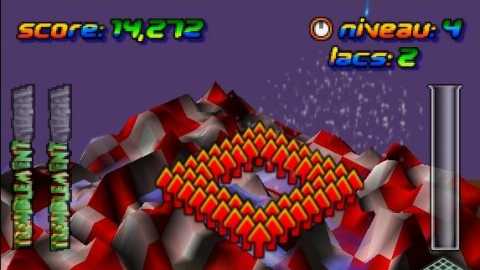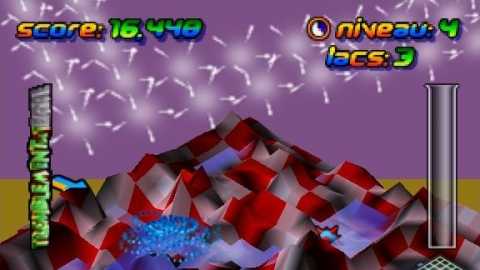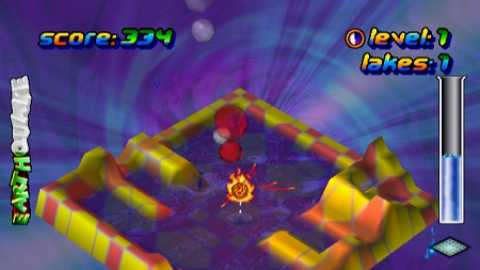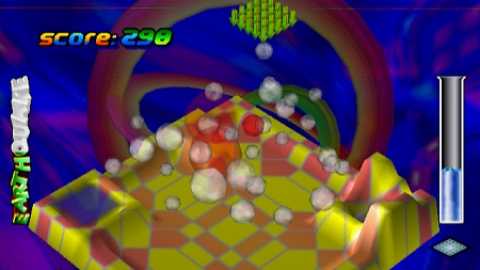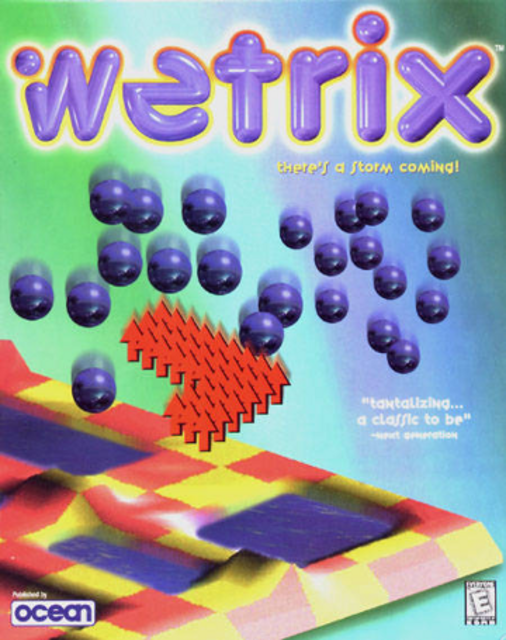Overview

Wetrix is an isometric 3D falling-block puzzle game developed by Zed Two and published by Ocean for the Nintendo 64 in North America and Europe on June 12, 1998, with a Japanese release by Imagineer on November 27, 1998.
In Wetrix, players start with a flat, square platform and must use falling pieces to alter its terrain in order to prevent water from spilling out. As they form "lakes" and vaporize water with fireballs for points, players must also contend with multiple hazards, including ice cubes that freeze the water and explosives that form holes in the ground. Along with multiple single-player modes (Classic, Pro, Practice, and Handicap), the game includes two-player split-screen multiplayer. It later received a sequel for the PlayStation 2, known as Aqua Aqua.
It later received a Windows PC port on January 15, 1999, as well as a handheld Game Boy Color port (known in Japan as Wetrix GB) by Imagineer in Japan (published by Imagineer on October 29, 1999) and Europe (published by Infogrames on September 29, 2000). It also received a port for the Dreamcast as Wetrix+, published by Xicat Interactive in North America on January 5, 2000 and by Take 2 Interactive in Europe on April 2000.
Gameplay
The Board and Game Pieces
A game of Wetrix is played on a flat, square 3D platform that occupies the majority of the screen. The player can use various game pieces to raise and lower the landscape to contain and control water on the board. The game pieces are as follows:
Uppers
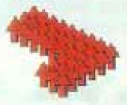
Red, upwards facing arrows that raise the landscape by one level. They come in four standard shapes: a straight line, a T shape, an L shape and a square ring. These are one of, if not the most common piece in the game; and in most game modes, several of these will fall initially to let the player build a perimeter before any water or other pieces fall.
Downers

Green, downwards facing arrows that lower the landscape. They come in two standard shapes: a small square and a straight line. No matter how high the downer connects with land, it will lower the land to the lowest point that any part of the downer touches. As such, if a downer is placed on a completely flat surface, it will have no effect.
Water Bubbles

Bubbles of water that break open upon contact with any piece of land. They come in various sizes. When water spills out of the bubbles, it behaves like water, flowing across the ground and attempting to fill the shape of its container. If water leaks over the edge of the board, blue arrows will flash to indicate where the spillage is occurring.
Fireballs

Balls of fire that evaporate water, thaw ice and destroy land. They exist in only one form. When fireballs hit a body of water, they will continue moving to the ground, evaporating the water as they go. Depending on the land surrounding and underneath the water, some water may still remain. If a fireball hits dry land, it will explode, clearing the point of contact to the ground and creating a sloped crater around it. Fireballs will also thaw ice, though a second fireball will be needed to evaporate the water.
Bombs

Bombs, though not of the giant variety, that blow holes in the landscape. They exist in only one form. When a bomb hits land, no matter how high, it destroys the point of contact, leaving a hole in the land where it landed and slightly deformed terrain in the immediate surroundings. The hole can be expanded by downers and repaired by uppers. If a bomb is placed in an existing bomb hole, a re-bomb is triggered: three additional bombs are dropped on the field at random. If one of these bombs land in an existing bomb hole, another re-bomb is triggered.
Lakes and The Drain
Any body of water on the game board is counted as a lake. Even if the water has no walls around it and is flowing towards the perimeter, it is counted as a lake.
On the right side of the screen is the Drain Meter, which represents how much water has flown off of the board. When the drain is nearly full, it will begin blinking to notify the player. When the drain fills completely, the game is over. The player can evaporate lakes to reduce the drain meter
The Earthquake Meter
On the left side of the screen is the Earthquake Meter, which represents how much land has been added to the starting game board. As the land is raised, through action of the player or certain game modes, the Earthquake Meter fills; similarly, when the land is lowered, the meter empties.
When the meter is nearly full, it will begin shaking violently, blinking and beeping to notify the player. If the Earthquake Meter fills completely, the board shakes, warping the landscape, and the meter resets. The game does not end if the Earthquake Meter fills, however an earthquake can often lead to a full drain; and if not, the player will be left in a position extremely difficult to recover from. In this way, the Earthquake Meter can be seen as a bigger danger than the Drain Meter.
Levels, Smart Bombs, Ice Cubes and Mines
As games progress, a timer in the upper-right corner of the screen will run. After a few minutes, a chime will play a couple of times and the game's level will increase. With each level increased the background and land change their colours and the speed at which pieces drop increases. The highest level in any game is level 10.
Smart Bombs
If the player has at least five lakes on the game board when a level up occurs in certain game modes, they will be rewarded with a smart bomb. When activated, a smart bomb resets the game board to a flat, empty state, empties the Drain Meter and Earthquake meter, and queues several uppers in the piece queue, similar to the beginning of the game. The score, level timer and current level are not reset, though, allowing the player to come back from a potential game over.
Ice Cubes
From level 2 onwards (excluding levels 4 and 8), ice cubes will periodically fall onto the largest body of water on the board. If the cube hits a body of water, it will freeze over. After a length of time, the ice will thaw and the water will flow freely again. If the ice hits dry land, however, the player will receive bonus points. The player can also use fireballs to thaw the ice instantly.
Mines
On levels 4, 8, 9 and 10, multiple mines will periodically fall into a single body of water. The mines float in the water for a short amount of time and are predominately harmless. They can be split up into separate lakes and forced onto dry ground without risk. However if the player evaporates a lake with mines in it, the mines will explode, stopping the evaporation and leaving holes akin to those made by bombs where the mines were.
Scoring, Duckies and Rainbows
More often than not, the objective in a game of Wetrix is to score as many points as possible. Points can be gained from dropping game pieces onto the board before they land on their own, letting ice land on dry land, repairing holes in the landscape and thawing ice. The main method of gaining points, however, is evaporating lakes.
All scores in a game of Wetrix are calculated based on how well the player is doing in the current game. Base scores are initially multiplied by the number of lakes and the current level. From there, two different types of multiplier can increase scores dramatically.
Rainbows
If enough water is contained on the game board, a rainbow will form across the board. When the rainbow is active, all scores are multiplied by 10. Only one rainbow can be present on the game board at any one time.
Rubber Duckies
If any lake on the board has a water level reaching two layers of land deep, a rubber ducky will begin swimming in it. Only the depth of the lake is important; the lake can be as large or as small as is necessary. When a rubber ducky is on the board, all scores will be multiplied by two, stacking with each additional ducky that appears.
For example, if a fireball evaporates a lake for what amounts to 10,000 points, a rainbow is active and there are four rubber duckies active, the score will be:
10,000 - x10
100,000 - x2
200,000 - x2
400,000 - x2
800,000 - x2
1,600,000
Rankings and Tile Sets
At the end of a game, the player is given a rank (beginner, ok, good, excellent, expert, super, master) based on either the score earned in that game, the playtime in that game or the level reached. If the player can earn a minimum rank across all modes that award ranks, the player is given alternate sets of game pieces.
Tile Set 1
The default tile set, available from the beginning of the game.
Tile Set 2
Awarded for a rank of "ok" across all game modes, this tile set replaces most uppers and downers. While the straight, I-shaped piece remains of both types, new pieces include triangular pieces, straight pieces of half the length as the I-shaped piece and a square upper, similar to the square ring piece, however with only a small hole in the centre.
Additionally, the piece queue icon in the lower-right of the screen can be inaccurate, with pieces shown as downers in the piece queue appearing in the game as bombs.
Tile Set 3
Awarded for a rank of "expert" across all game modes.
Tile Set 4
Awarded for a rank of "super" across all game modes.
Game Modes
There are several game modes in Wetrix.
Classic Mode
A no-frills game of Wetrix. The player starts at level 1 and plays to earn as many points as possible until the drain fills up. Smart bombs can be earned at level-ups. Ice cubes and mines appear normally.
Pro Mode
A much more challenging game of Wetrix. In Pro Mode, the game begins at level 5. Additionally, bombs fall in pairs. Despite this, the player is still playing to earn as many points as possible. Ice cubes and mines appear normally.
Multiplay Mode
A two player, split-screen game of Wetrix. Each player is given a game board of their own to play a game of Wetrix on. Whichever player's drain fills first loses. By evaporating water, each player can build up an attack meter across the bottom of their screen. Then, depending on how much power has been built up, players can either send ice cubes, water, an earthquake or bombs to affect the other player's game.
Handicap Mode
In Handicap games, special rules are in play that affect the board. With each level up, the rules will be reapplied.
Ice Layer A/B
The game begins with a layer of ice on the board. After a short amount of time, it will begin thawing. At level up, all water on the board is replaced with the ice layer.
Raised Land A/B
The Earthquake Meter is partially filled at the beginning of the game and cannot be lowered. At level up, the floor raises slightly.
Random Land
The game begins with various parts of the board raised to varying small degrees. At level up, the board partially resets; all pieces disappear and the land is reset, however the random areas of the land that are raised are determined by what areas of the board had pieces placed down before the level up.
Random Holes
The game begins with several bomb holes already in the board. At level up, all water disappears, a new set of bomb holes are placed in the ground and the player is given a set of uppers to repair them before more water returns.
Half-Full Drain
The drain begins half-filled at the start of the game. At level up, the drain will reset to its half-filled state, regardless of how much water was there before.
Challenge Mode
In Challenge games, the player is presented with highly demanding game scenarios, but is also given a rare "win" condition. High scores are generally much more difficult to attain in this mode than any other.
1-Minute Challenge
The game only lasts for one minute. However, the game begins at level 10.
5-Minute Challenge
The game only lasts for five minutes. However, the game begins at level 4.
100-Piece Challenge
Only 100 pieces fall before the game is over. However, the game begins at level 8.
500-Piece Challenge
500 pieces fall before the game is over. However, the game begins at level 4.
Preset A/B
The game begins at level 1 and proceeds like a normal game of Wetrix in Classic Mode. However, the pieces always fall according to a preset pattern. When the pattern is complete, the game ends.
Practice Mode
In Practice Mode, the player can choose between playing a practice game of Wetrix or playing through one of eight tutorials.
The practice game plays like a normal game of Wetrix, but removes the rain, levels (and, consequently, ice cubes and mines) and falling pieces. The player can still fill the drain and lose, but is given a more slower-paced environment to practice strategies.
The tutorials teach the player basic game mechanics, preparing them for the first few levels of Classic Mode. The player can play the tutorials normally, or in a split-screen view, with a computer-controlled demo playing alongside them, showing a possible, if not recommended way to complete the tutorial.

 Dreamcast
Dreamcast PC
PC